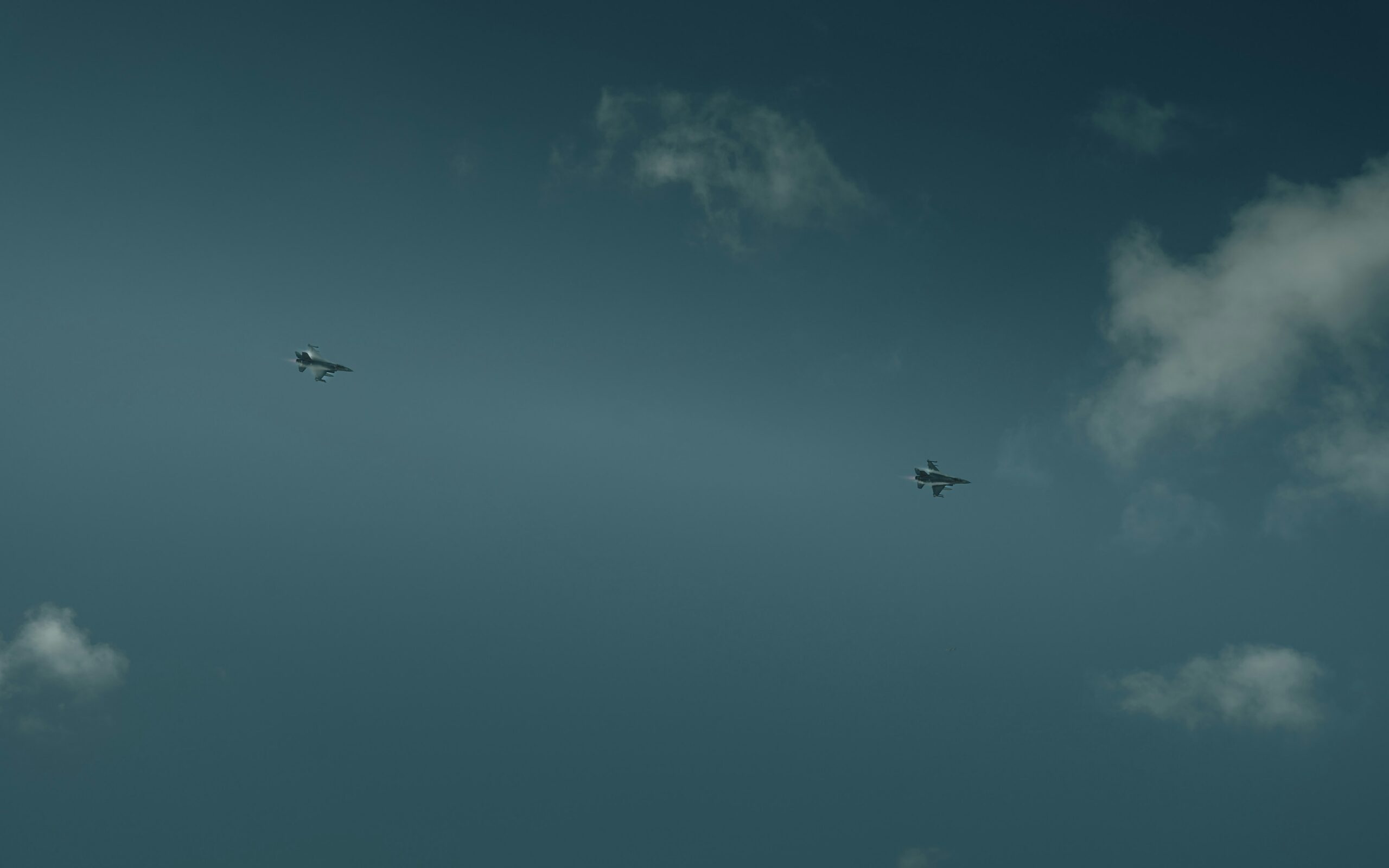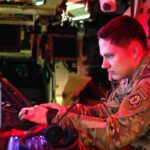Work began in late 2006. Ministry planners wanted proof that home-grown firms could build a stealth drone without calling in outside blueprints. Engineers set a clear target: deliver a machine that could fly far, stay low on radar scopes, and follow route commands without a pilot’s steady hands. The brief sounded neat on paper, but key teams soon ran face-first into budget lines and time slips. A few suppliers missed early parts deliveries, and one wing panel batch even arrived with the wrong bolt holes drilled. Still, the people in the hangar pushed on, patching gaps as they showed up. A similar focus on domestic development and integration was seen in the UK Watchkeeper contract, aimed at strengthening national unmanned capabilities.
Design sessions chewed through countless airflow models. Some sketches widened the body too much. Others pinched the engine duct too tight. During one late shift an analyst forgot to save a full CFD run , that loss forced extra nights of reruns. Those small stumbles, though, turned into better fixes next morning. By September 2007 metal finally started joining on the jig.
Shaping the Airframe
Builders kept each line smooth to scatter enemy radar. Every joint sat flush or hid behind the composite tape. A tiny misstep with filler could throw reflectivity up by a few decibels, so inspectors walked around with flashlights and mirrors. The wingspan ended just shy of ten meters, about one parking bay shorter than a Hawk trainer. Under the skin sat ribs of carbon sandwich and aluminium-lithium, mixed for stiffness plus heat carrying.
The Rolls-Royce Adour Mk951 engine is slotted high on the back deck. That place shields turbine blades from radar sets crouching at sea level. Techs fitted an S-shaped duct that bends the airflow, killing direct line-of-sight to the compressor face. On the first mount-up one bracket misaligned by two millimeters; crews reamed the holes a touch larger rather than scrap the support bar. The Adour later pushed around 6 500 lb thrust in calm air, enough for brisk climbs during trials.
Ground Test Marathon
By mid-2010 Taranis rolled toward engine-run pens. Teams kicked tires, swung the gear up and down, and checked fuel gauge wiring that looked a bit lose. One avionics bay door stuck half-open; a tech sprayed extra lubricant and re-set the latch twice before it clicked right. Taxi trials followed. The drone crept, then rattled quicker along Warton’s strip. At one point a brake overheated, leaving faint scorch rings on the hub. Spares came quickly from stock, and the fix was done by lunch.
Control links drew heavy scrutiny. Operators sat in remote cabins, sending climb, turn, and loiter commands. Early packets lagged a handful of milliseconds above spec. Code writers trimmed handshake steps, shaving the delay close to target. Only once did the autopilot drop to safe-mode, after a power supply blink; engineers swapped that unit same evening.
First Flights Over Woomera
Liftoff came 10 August 2013 at the Woomera Test Range, Australia. Dawn air felt still, the jet exhaust rippled the red dust. Taranis rose clean, banked left, and settled on a gentle racetrack circuit. Fifteen minutes later wheels kissed back down. Crew members let out low cheers, a few claps, then silence as data files copied to servers. Later sorties stretched past fifty minutes, touching higher altitudes and wider speed bands. One pass saw a small yaw oscillation; software damping tweaked after debrief, issue never re-appeared.
Hiding in Plain Sight
The planform follows a blunt delta layout. No tail fins break the outline, so radar returns bounce away not back. Sensor bays sit inside the belly. Hinged doors close flush, leaving no gap for stray reflections. Heat masking took equal weight. Rolls-Royce added serrated petals on the nozzle rim, trimming exhaust signature a notch. Infra-red cameras on chase planes still saw a glow, but cooler than many legacy fighters.
Internally, twin mission computers fuse radar, electro-optical, and passive signals into one picture. Pilots in a ground seat send broad orders like “track waypoint six,” then watch the drone handle course changes on its own. When sand gusts upset airflow, the flight control laws nudge flaperons fast enough that wings barely twitch. Each test flight poured new numbers into update cycles, tightening rules step by step.
Where It Might Fight
Staff officers looked hard at deep-strike roles. A stealth drone able to slip through dense missile belts could punch radar stations or comm nodes early in a campaign. Planners also weighed electronic attack loads, maybe towing a jammer pod under the shroud of low observability. Recon runs ranked high too; a daylight camera with a long focal lens could scan hostile runways from forty miles out. All those tasks shared one key point: no pilot in harm’s way.
The ethics panel, though, drew a bright line. Any release of weapons would stay under human finger-on-button. Autonomy lived in the flying, not in choosing targets. That stance cooled some public worry. Still, debates over AI use kept surfacing in committee rooms, each round pushing for tighter policy language.
Industry Mesh
Four main firms carried bulk effort.
- BAE Systems: overall design, structural build, low-observable tricks
- Rolls-Royce: engine supply plus exhaust shaping
- QinetiQ: sensor fit, telemetry, flight-test rigs
- GE Aviation Systems: flight computers and power management
Shared funding split roughly half government half private cash. Final spend landed near £185 million , a bit above first forecast yet within later caps. Each company lifted lessons into next product cycles. BAE refined composite lay-ups for later Tempest mock-ups. Rolls-Royce took exhaust cooling tests into future adaptive engines. QinetiQ reshaped autopilot code for maritime drones. That spin-off effect grew wider than the single airframe ever would. Meanwhile, the lifetime cost of Protector rises 40% in a recent separate UAV programme, underscoring how costs can escalate over time.
Hard Numbers Collected
Key scores after the Woomera campaign:
- Radar cross-section stayed below target cone through ±45° aspect
- Link latency trimmed under 250 ms round-trip most passes
- Engine fuel burn tracked models within three percent at cruise setting
- Autopilot held altitude band ±15 ft during turbulence tests
- Planned test matrix finished ten weeks sooner than worst-case chart
Ripples Into Future Combat Air
By 2015 chiefs folded Taranis data into early Future Combat Air System papers. They saw unmanned wingmen pairing with crewed jets, each feeding sensor tracks to the other. That notion later merged into the Tempest banner, now widened under the Global Combat Air Programme linking UK, Italy, and Japan. Engineers who had debugged Taranis autopilots now tune AI pilots for six-generation concepts.
The craft itself never reached squadron ramps; it did not need to. Value sat in notebooks, code libraries, and engineers’ muscle memory. Flight control algos first tested in the Australian desert now anchor digital twins running on secure clouds. Wind-tunnel tweaks that smoothed Taranis leading edges guide newer intake mouths on Tempest drones.
Parliament and Public View
Lawmakers pointed to Taranis during budget grills, proof that British talent could still craft frontline kit. A small group demanded more open figures on cost overruns; the Defence minister replied numbers already on record, though a late-stage bill for shipping to Australia slipped past earlier briefs. Media stories sometimes painted Taranis as a secret bomber in waiting. Insiders kept stating the airframe served demo duty only, nothing more. Even so, photographs of that sharp silhouette lit headlines, feeding talk shows for weeks.
Data Crunch and Shelf Quiet
After last flight passes the aircraft moved into a hangar with environmental seals. Engineers stripped some panels, swapped sensors, ran static loads until hairline cracks showed. They mapped those flaws, fed them into fatigue models, and stored results for composite life forecasting. Software teams replayed flight tapes thousands of times, hunting rare glitch spikes that might hide under normal plots. One memory stack overflow popped up twice; a patch fixed it, code archived.
March 2025 Update
Fast forward to this spring. GCAP leaders outline a vision where a manned core jet teams with swarms of expendable drones. Many command layers wash through AI brokers. The algorithms handling route de-confliction trace back to Taranis field trials. Rolls-Royce now trials a variable-cycle engine; heat signature lessons from the old Adour mods feed nozzle cooling pores. QinetiQ demos a cockpit display compressing ten sensor feeds into one map; layout roots sit in early Taranis control vans.
Analysts say the programme shaved months off GCAP risk gates. Because the UK already flew a stealth drone in live airspace, certification staff trust digital methods built on that record. Money saved funnels into electronic warfare payloads and networking stacks.
International Eyes Turn
Allied delegations ask how Britain shared costs among firms yet kept IP watertight. They study how Woomera flights stayed clear of export control traps. Some nations, eyeing their own sixth-gen paths, see Taranis as a template: spend moderate sums on a single demo, grab data, then leap toward full-scale platforms with partners.
Closing Notes
Taranis never dropped a bomb or patrolled hostile skies. Still, its ghost sits in each CAD file now shaping Europe-Asia’s next fighter family. The unfinished fuselage in a BAE hangar reminds visitors how one prototype, flown only a handful of hours, can echo for decades. Mistakes made during those early bolt-ups spurred cleaner builds later. Lines of code first scribbled to steady a wobble now guide autonomous swarms.
The Ministry of Defence bets that foundation will pay again when GCAP metal leaves the runway, maybe 2030, maybe a bit later. If that jet lifts smooth, some thanks will travel back to the dark delta that broke dawn over the South Australian plain, left its contrail, and slipped into history while still pointing firmly toward tomorrow.
REFERENCE SOURCES:
- https://defense-update.com/20140216_taranis.html
- https://www.gov.uk/government/news/new-taranis-combat-aircraft-thunders-into-view
- https://www.airforce-technology.com/projects/tanaris/
- https://www.deagel.com/aerospace%20forces/taranis/a001954
- https://en.wikipedia.org/wiki/BAE_Systems_Taranis
- https://www.unmannedsystemstechnology.com/2014/02/video-first-flights-of-uk-built-taranis-uav-surpass-all-expectations/
- https://greydynamics.com/taranis-drone-shaping-the-uks-air-combat-future/



